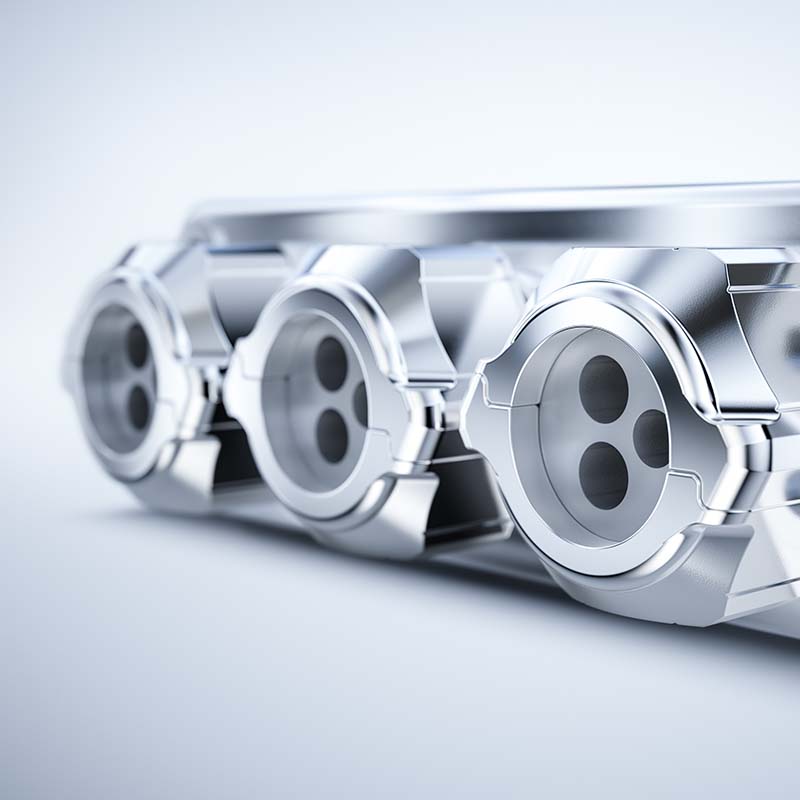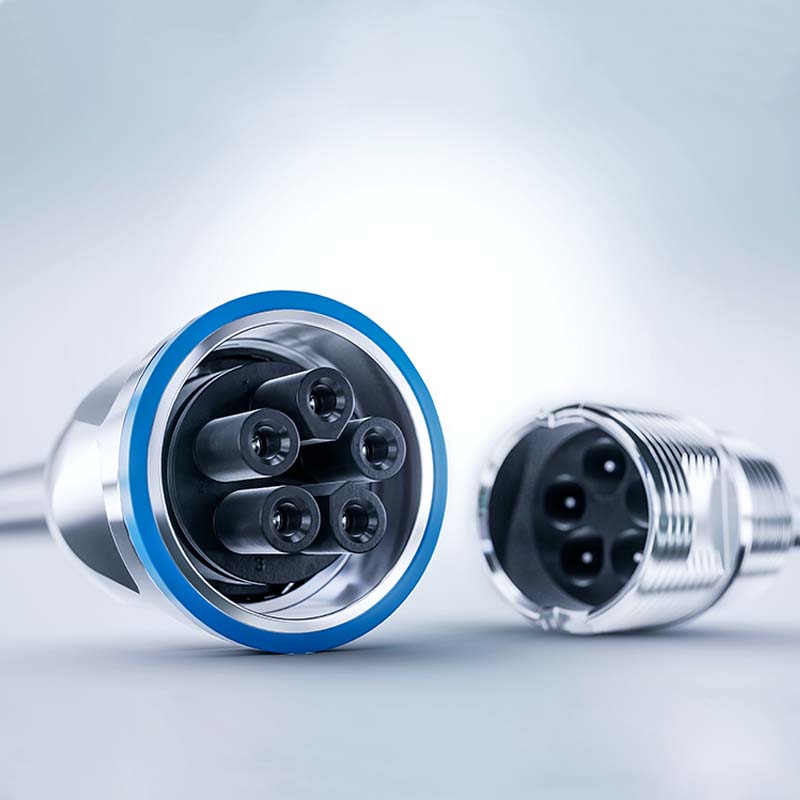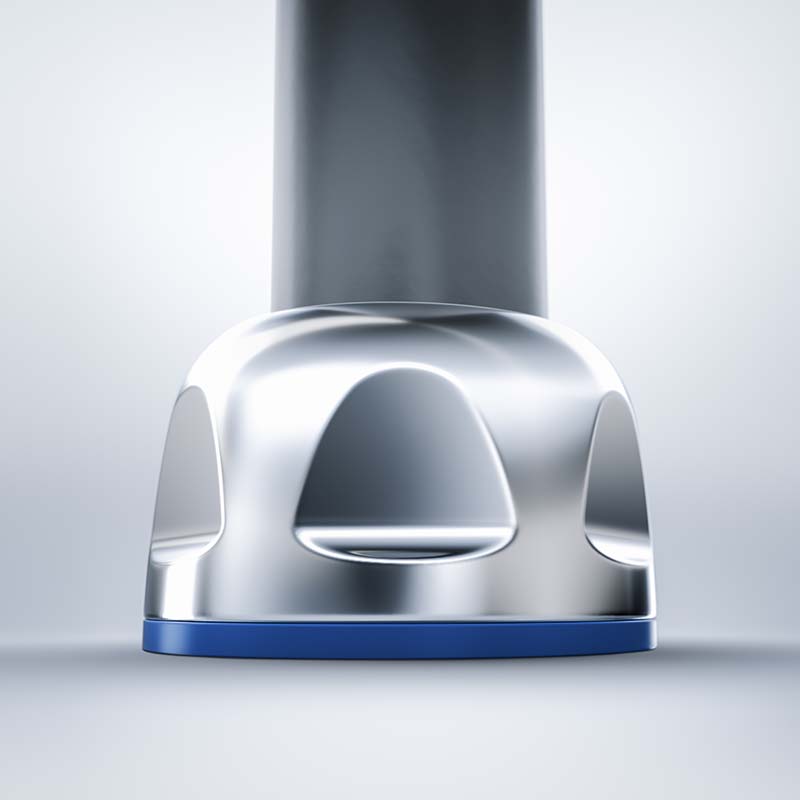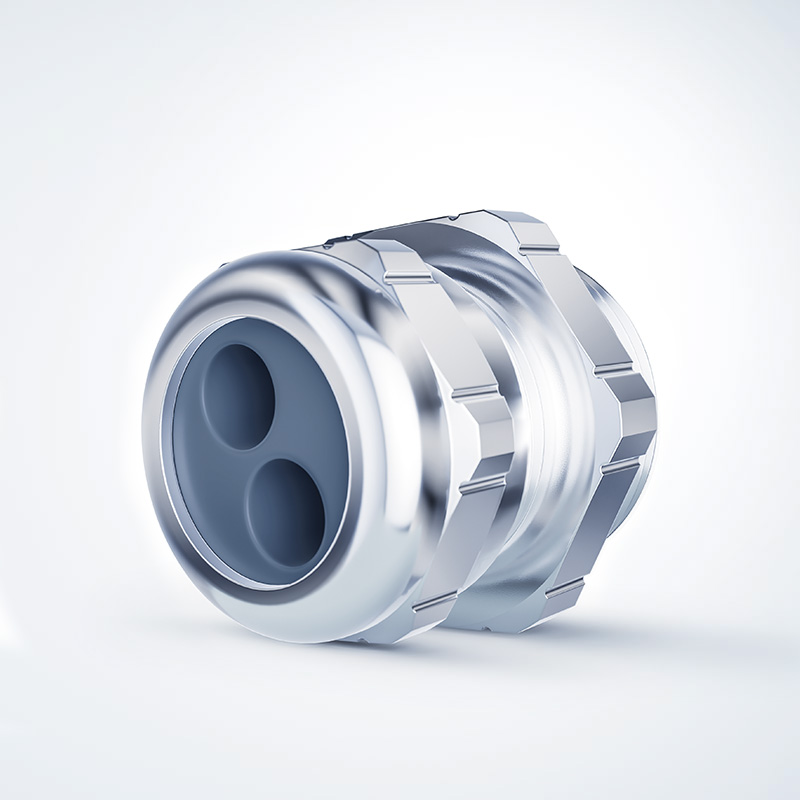Cable glands from PFLITSCH –
the ideal combination of safety and efficiency.
With its comprehensive, optimally coordinated range of cable glands, PFLITSCH can offer you the right solution for every industry and every application. Our range includes not only standard cable connectors that feature excellent fundamental features such as tightness, strain relief, bending protection, ease of assembly and longevity, but also solutions for special-purpose applications.
These include the hygienic blueglobe CLEAN Plus designed for the food industry, the blueglobe AE TRI HTS EMC for the electromobility sector and the UNI Dicht fire protection for the railway industry.
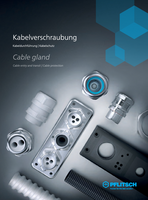
documentCreationDateTime: 2024-05-08
fileUploadDateTime: 2025-07-08
90.2 MB
EN
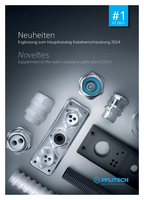
documentCreationDateTime: 2025-07-08
fileUploadDateTime: 2025-07-08
3.3 MB
EN
Our cable glands – Your benefits
The right cable fitting for every application
Excellent tightness of seal with protection types up to IP 69
Effective strain relief – some far above average
Reliable protection for cable edges when fed into the enclosure
They meet all common European EMC and ATEX standards as well as numerous important customer-specific standards
Guaranteed quality for international applications due to VDE, UL,
CSA and EAC approval
Product search
Our product search function makes it easy to find the right PFLITSCH electrical gland for your application. Just select the required product group in order to view suitable PFLITSCH product solutions. You can also refine your search by using technical parameters such as material, cable diameter and protection type. You can then request a personal offer for the product or products you have selected online.
What is a cable gland?
In production plants, cable installations for power supply and data transmission provide the connections between individual machines, control devices and switch cabinets. They are, in a certain sense, the nervous system of the plant. For this reason, the cables need to be inserted through a hole in the respective enclosure so that they can be fixed at the corresponding contact point. They must fulfil basic requirements that contribute to the safety of the entire machine or system. On the one hand, this is the strain relief, which holds the cable securely and tightly so that it cannot be pulled out of the enclosure and interrupt the transmission of power or data. And secondly, the tightness, which prevents water and dust from entering the enclosure and interfering with the function. Further properties can be found under "Basic properties for universal applications" on this page. PFLITSCH offers a coordinated system of appropriate cable glands for a range of applications in various industries that meet the most stringent requirements.
Which material does a cable entry consist of?
Depending on the application and its technical requirements, such as chemical resistance or resistance to temperature and weathering, we manufacture the gland bodies of our cable glands from stainless steel, nickel-plated brass, polyamide and polyvinylidene fluoride (PVDF). Accordingly, we produce the sealing inserts in the variants thermoplastic elastomers (TPE), vulcanised thermoplastic elastomers (TPE-V) and silicone.
What does a cable gland need to do for your application?
A cable strain relief not only needs to fulfil basic, but also highly specific functions, depending on the requirement and area of application. In rail vehicles, for example, fire protection cable glands are used that, in addition to the basic characteristics, must also possess sophisticated fire protection properties. And in automation, EMC cable glands are used that go above and beyond the usual properties by reliably discharging electromagnetic interference.
The decisive factors are always which properties are required and to which degree, to ensure that the cable entry precisely matches the respective application and is neither undersized nor oversized. Below we provide you with an overview of all the properties and for which applications they are required.
Basic properties for universal applications
Environmental factors such as dust and moisture can penetrate the enclosure at the cable entry and interfere with the function. In this case, the cable entry needs to ensure that the enclosure is securely sealed towards the inside. The type of protection IP (International Protection) provides information regarding the tightness. It consists of two key indicators: The first of these stands for tightness against dust. The second one stands for protection from water. Many variants of the blueglobe cable glands achieve type of protection IP 69; the 6 stands for complete dust-tightness and the 9 for maximum protection against penetration by water during high-pressure and steam cleaning.
The point where a cable makes contact in a machine or switch cabinet is always critical. The strain relief feature ensures that the inserted cables are held securely and thus reliably take the strain off the contact points inside an enclosure. PFLITSCH cable glands achieve this by means of soft pressing, which ensures that the cable is held securely without being either constricted or even damaged. For exceptional strain relief requirements, we offer specialised solutions such as the UNI Clamping with bracket clamps, which can absorb tensile forces of up to 500 N.
Certain industries require cable entries with a particularly high level of temperature resistance. Others, in turn, call for operational capability across an exceptionally wide range of temperatures, including the railway and the electric mobility industries, where cable entries can be exposed to the high operating temperatures of components such as the drivetrain and the converters. At the same time, however, they need to be able to withstand extreme below-zero temperatures during the winter months without problems. By selecting PFLITSCH cable glands you are definitely on the safe side, as they have been thoroughly tried and tested over many years. For example, the blueglobe HT (high-temperature variant) with its silicone sealing insert can withstand temperatures from –55 °C to +200 °C.
Vibrations can cause some of the most challenging mechanical stresses on cable entries, such as in the worlds of robotics and automation or in the railway and electric mobility industries. Particularly constant vibrations and high frequencies can cause cables and wires to become loose and therefore damaged. Right from the design stage of its cable glands, PFLITSCH emphasises the importance of vibration resistance in order to guarantee maximum safety in this respect.
In general, cable glands are installed in places where they are not exposed to unusually high mechanical stresses. However, there are exceptions, such as in the railway industry, where cable glands installed under floors can very well be exposed to this type of influence. This is where PFLITSCH solutions such as UNI Dicht cable glands, which are also approved for fire protection applications, have been successfully deployed for many years as they have proven themselves to be a reliable solution in this rugged environment.
If you install a cable in a moving component, you need to ensure that its permissible bending radius is not exceeded, as it could become kinked.
For this reason, PFLITSCH has developed its own bending protection cable glands such as theUNI Flex with a special stainless-steel spring that reliably solves this problem. Depending on the design, these products also ward off external influences such as UV radiation, aggressive media and dynamic forces from the cable section under bending stress and are tested and certified in accordance with the stringent VDE (EN 62444) approval tests.
Depending on their field of application, cable entries may come into contact with substances that can attack the material of the gland.
With this factor in mind, PFLITSCH has introduced suitable cable gland bodies and sealing inserts into its range – such as the blueglobe CLEAN Plus – which display excellent resistance to corrosion and chemicals such as aggressive liquids including detergents, salt solutions, acids, organic liquids, petrol, diesel and mineral oils.
Although ease of installation is not a technical property in the narrower sense, it does play a key role in deciding which product to purchase. Fast, easy installation saves time and therefore cuts costs. On large projects where hundreds of cable entries need to be installed, a small time saving per cable entry can add up to a significant amount of time saved overall. We also took this aspect into account when developing our products and ensured that they are compelling in every respect in terms of ease of installation: PFLITSCH cable glands, particularly the blueglobe, consist of as few components as possible, which can also be installed quickly, easily and yet safely – without any special-purpose tools.
In which industries are the cable entries used?
PFLITSCH cable glands are used in a variety of industries with widely differing requirements in some cases, such as:
- Mechanical and plant engineering
- Robotics and automation
- Railway industry/special-purpose vehicles
- Food and pharmaceutical industries
- Chemical, oil and gas industries
- Telecommunications
- Power generation
- Electrical industry
- Electromobility
Certificates and standards
PFLITSCH cable entry glands meet all key national and international standards and are tested in accordance with the corresponding certificates relevant for their particular field of application. They also meet important customer- and industry-specific standards, such as the Bombardier SMP 800 standard and the American NFPA standard, which are essential for the railway industry. We can therefore give our customers the certainty that our products are fully suitable for their applications.
Your questions – our answers
Cable entries essentially describe the technical principle for inserting a cable into an enclosure or switch cabinet. The cable gland is a special cable entry technique that was invented by PFLITSCH.
The tightness of the cable entry ensures that dirt and moisture do not penetrate the enclosure and impair the function of the electrical installation.
The decisive factor here is which of the required properties is most important for the respective application and which of these are relevant. It is therefore necessary to define a ranking of the requirements and the resulting properties and then select the cable gland accordingly. In case of doubt, the PFLITSCH customer service will be happy to assist you.
Strain relief is a measure of how tightly a cable is held when inserted, so that the strain is reliably taken off the contact points inside an enclosure.
Firstly, the different sizes and shapes of the cables require a corresponding range of products. Secondly, specific solutions have been developed for individual requirements such as electromagnetic shielding, high temperatures and hygienic applications. These factors result in countless possible applications, for which PFLITSCH has the right products available.
The abbreviation Pg stands for armoured thread (from the German “Panzergewinde”). This thread was originally designed for thin-walled armoured steel conduits used in electrical installations and therefore has a relatively shallow thread depth. Specific PFLITSCH UNI Dicht variants are available with a Pg thread.
If requested, PFLITSCH can supply sealing inserts that you can make holes in yourself. Any holes that are no longer required can be closed using the respective bolts.
As there are very different cable glands, the assembly process may differ in detail. To put it simply, the double nipple is first screwed into the hole in the enclosure for installation. Then the cable is inserted into the enclosure through the pressure screw, the sealing insert and the double nipple. Next the pressure screw is tightened with a defined torque so that the sealing element fits tightly around the cable and encloses it all around.
Depending on the area of application and the associated requirements, cable glands must also be waterproof. The specified protection class IP (Ingress Protection) in conjunction with a two-digit number provides information on the extent to which the cable gland is tight against the ingress of water and solids. IP 44, for example, offers protection against the ingress of splashing water from all sides, while IP 55 offers protection against water jets from any angle. Basically, the higher the number, the better the tightness.
The cable diameter of the cable to be inserted is decisive for the correct choice of cable gland size. With the blueglobe series, for example, PFLITSCH offers a cable gland system with a very large sealing range, which makes it possible to cover an above-average wide sealing range, i.e. cables of different thicknesses, with one cable gland. In our catalogue, we specify the sealing range or which cable diameters are reliably sealed for each cable gland size.
Further information
Cable trunking
You’re also interested in the multitude of possibilities offered by our cable trunking solutions? Or are you looking for a concrete solution to a specific cable laying project? The Cable Trunking section provides an overview of all of our models and highlights their specific advantages and benefits.
Cable routing
Downloads
Are you looking for a comprehensive overview of PFLITSCH’s products and services? You can find the latest PFLITSCH catalogues and brochures in the Downloads section (PDF files).
Contact
You have questions about a product, would like to make an appointment for a one-to-one consultation or would like to experience our products live? Get in touch! We look forward to hearing from you.
Contact



